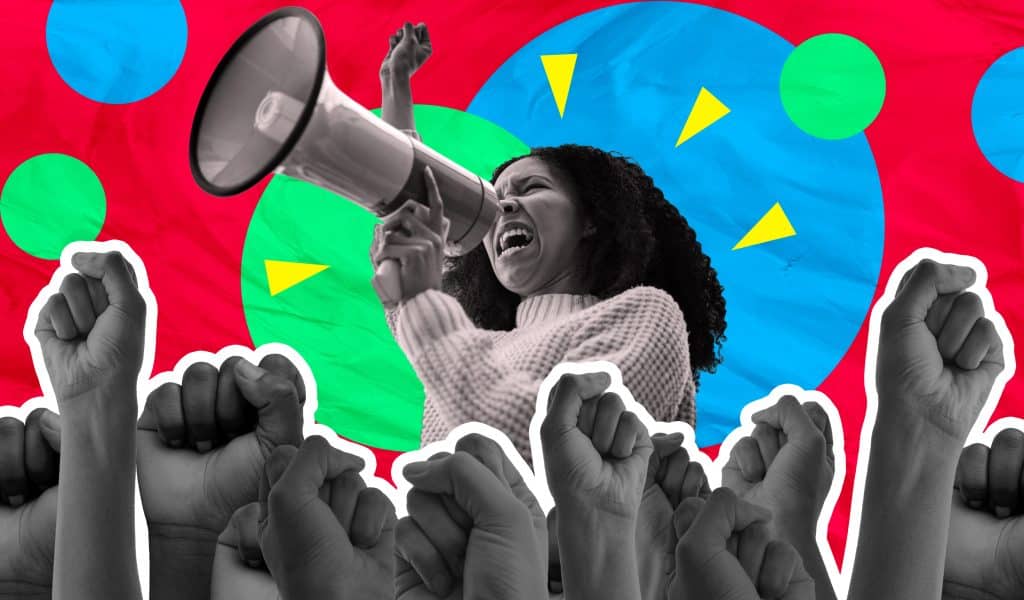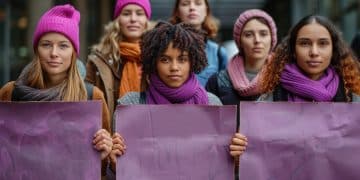Civil rights advocacy movements and their impact

Anúncios
Civil rights advocacy movements aim to achieve equality and justice by addressing systemic racism, voter suppression, and emerging issues, while mobilizing communities and building coalitions for lasting change.
Civil rights advocacy movements have been pivotal in fighting for equality and justice. Have you ever wondered how these movements shape laws and influence societal norms? Let’s dive into their historical significance and ongoing legacy.
Understanding civil rights advocacy movements
Understanding civil rights advocacy movements is crucial to appreciating the progress made towards equality. These movements have shaped policies and public opinion throughout history. They aim to secure the rights of marginalized communities and ensure that everyone has a voice.
Anúncios
Historical Background
The roots of civil rights advocacy can be traced back to various struggles against oppression. Movements emerged globally, echoing the call for justice and fair treatment. Notable efforts in the United States, such as the civil rights movement of the 1960s, spotlighted the fight against racial discrimination.
Key Features of Civil Rights Advocacy
These movements typically share common characteristics:
- They focus on achieving specific legal rights.
- Advocates often utilize peaceful protests and campaigns.
- They aim to raise public awareness and generate support.
Moreover, civil rights advocacy works in collaboration with various organizations. These partnerships can amplify their message and mobilize resources. By engaging different communities, movements become more inclusive, allowing diverse voices to contribute to the cause.
Anúncios
One of the defining features of successful advocacy is its ability to adapt. As society evolves, so do the tactics and goals of these movements. They continually assess the landscape of civil rights challenges to remain relevant in their efforts. For instance, contemporary movements focus on issues like gender equality and LGBTQ+ rights, expanding the traditional scope of civil rights.
Key historical milestones
Key historical milestones in civil rights advocacy movements illustrate the significant strides made towards achieving equality. These events not only transformed society but also left a lasting impact on generations to come.
The Civil Rights Act of 1964
One of the most notable milestones is the Civil Rights Act of 1964. This legislation made it illegal to discriminate based on race, color, religion, sex, or national origin. It was a monumental step towards ending segregation and ensuring equal access to public accommodations.
The Voting Rights Act of 1965
Another critical moment came with the Voting Rights Act of 1965. This act aimed to eliminate barriers that prevented African Americans from voting. It addressed issues like literacy tests, ensuring that every citizen could participate in the democratic process.
- Protests and marches drew national attention.
- Grassroots movements played a crucial role.
- Support from allies across various groups strengthened the cause.
In addition, the establishment of organizations like the NAACP in 1909 and the Southern Christian Leadership Conference (SCLC) in 1957 marked the formal organization of advocacy efforts. These groups mobilized communities and pushed for legislative changes, amplifying the collective voice for justice.
Milestones such as these serve as reminders of the ongoing struggle against oppression and the importance of remaining vigilant in the fight for civil rights. They illustrate how grassroots efforts and organized movements effectively challenge inequitable systems.
Major figures in the civil rights movement

Major figures in the civil rights movement played crucial roles in advocating for equality and justice.
These leaders inspired countless individuals to join the fight against discrimination and injustice.
Martin Luther King Jr.
One of the most prominent figures is Martin Luther King Jr.. Known for his powerful speeches and commitment to nonviolent protest, King led significant initiatives such as the Montgomery Bus Boycott and the March on Washington. His leadership helped to bring national attention to civil rights issues.
Rosa Parks
Rosa Parks is another key figure. Her courageous act of refusing to give up her bus seat sparked the Montgomery Bus Boycott. Parks’ bravery became a symbol of the struggle against racial segregation.
- She is often referred to as the “mother of the civil rights movement.”
- Parks collaborated closely with activists and organizations to promote civil rights.
- Her actions inspired many to stand up against injustice.
Another influential leader was Malcolm X. He advocated for black empowerment and was known for his willingness to address the systemic issues facing African Americans. His militant approach contrasted with King’s nonviolent method but drew attention to the urgent need for change.
Additionally, figures like John Lewis, a member of Congress, and Angela Davis, an activist and scholar, contributed to the movement’s goals through advocacy and activism. Their dedication to civil rights continues to inspire new generations today.
Current challenges faced by advocates
Current challenges faced by advocates in the civil rights movement are numerous and complex. Despite progress over the years, many individuals and organizations continue to fight against various forms of injustice and inequality.
Systemic Racism
One of the biggest challenges is systemic racism, which is deeply rooted in social, economic, and political systems. Advocates work tirelessly to dismantle these structures, but change is often slow and met with resistance. Many communities still experience discrimination in areas such as housing, education, and employment.
Voter Suppression
Voter suppression remains a critical issue. Laws and regulations in some states make it more difficult for marginalized groups to exercise their voting rights. This includes strict voter ID laws and reducing the number of polling places in certain areas.
- Efforts to increase accessibility to voting.
- Engaging communities in voter education.
- Advocating for reforms to protect voting rights.
Another significant challenge is the rise of hate crimes and anti-immigrant sentiment. Advocates strive to combat hate speech and violence against vulnerable populations. They aim to create safer spaces for everyone, regardless of their background.
Additionally, funding and resources are often limited. Many civil rights organizations operate on tight budgets, making it difficult to maintain programs and outreach efforts. Advocates continuously seek support to sustain their initiatives and create meaningful change.
The future of civil rights advocacy
The future of civil rights advocacy holds both challenges and opportunities. As society continues to evolve, advocates must adapt to new issues while remaining committed to equality and justice.
Emerging Issues
One significant challenge is addressing the impact of technology on civil rights. Issues such as digital surveillance and data privacy are becoming increasingly important. Advocates must navigate these complexities to protect the rights of individuals in the digital age.
Climate Justice
Furthermore, climate justice has emerged as a vital concern. Environmental issues disproportionately affect marginalized communities. Advocates are working to ensure that these communities are included in the discussions on environmental policies.
- Promoting sustainable practices to benefit everyone.
- Advocating for equitable access to resources.
- Highlighting the link between environmental and social justice.
Collaboration is also key to the future of civil rights advocacy. Building coalitions across different movements can amplify voices and strengthen efforts. Advocates recognize that issues often intersect, requiring a unified approach to address them effectively.
Moreover, educating the next generation is crucial. By involving young people in advocacy, organizations can foster a new wave of leaders committed to fighting for civil rights. This engagement encourages fresh perspectives and innovative solutions to ongoing challenges.
FAQ – Frequently Asked Questions about Civil Rights Advocacy
What are the main goals of civil rights advocacy?
The main goals include promoting equality, fighting discrimination, and securing basic human rights for all individuals.
Who are some key figures in the civil rights movement?
Key figures include Martin Luther King Jr., Rosa Parks, Malcolm X, and John Lewis, among others.
What challenges do civil rights advocates currently face?
Current challenges include systemic racism, voter suppression, and the impact of technology on civil rights.
How can I get involved in civil rights advocacy?
You can get involved by educating yourself about the issues, joining local organizations, and participating in community events and movements.





